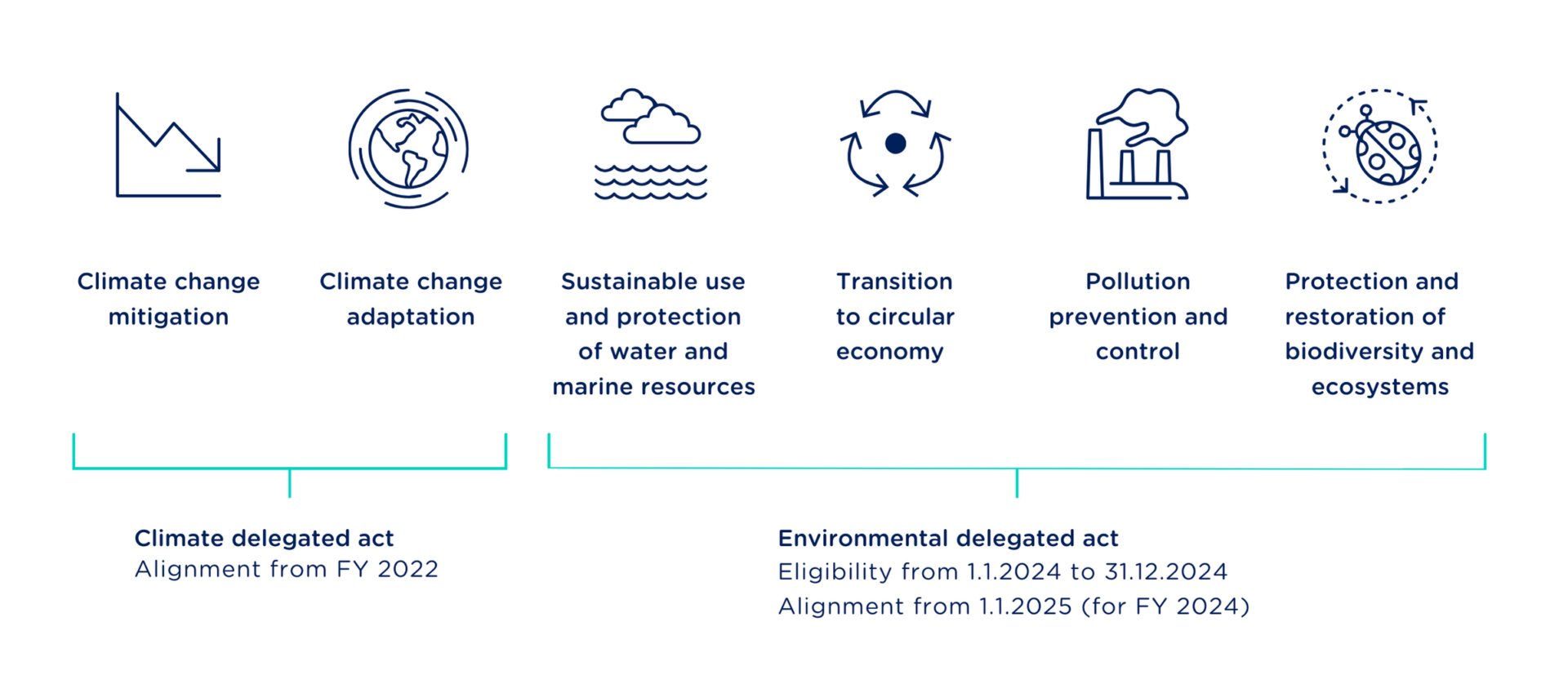
EU Taxonomy Classification – 4 Steps to Compliance
The EU Taxonomy Classification is a system that defines activities that can be considered environmentally sustainable. This creates a common language that can be used by companies, investors, and governments to clearly and consistently express opinions or facts about sustainable activities.
The EU Taxonomy targets financial market participants and non-financial companies in key sectors relevant to achieving the environmental targets defined under the EU Green Deal.
EU Taxonomy Classification: Eligibility and Alignment
The EU Taxonomy Classification requires companies to classify their environmentally sustainable economic activities and investments and report related economic key performance indicators (KPIs) annually. The EU Legislation provides a set of taxonomy activities that are defined as critical for six environmental objectives. If an economic activity is included in a delegated act, i.e., taxonomy-eligible, it can substantially contribute to one or more environmental objectives under the Taxonomy Regulation.
Six critical EU taxonomy objectives:
- Climate change mitigation
- Climate change adaptation
- Sustainable use and protection of water and marine resources
- Transition to a circular economy
- Pollution prevention and control
- Protection and restoration of biodiversity and ecosystems

EU Taxonomy Classification – Step by step
Step 1 – Assess Taxonomy-eligibility
EU Taxonomy classification starts by creating a list of economic activities and assessing their taxonomy eligibility. The first task is to identify potential eligible economic activities of the company by comparing them to the defined list of activities in relevant taxonomy delegated acts.
Step 2 – Assess Taxonomy-alignment
| Substantial contribution | Do No Significant Harm | Minimum safeguards |
|---|---|---|
| The second step is to assess compliance with the substantial contribution criteria. For economic activity to be Taxonomy-aligned and defined as environmentally sustainable, it must meet strict conditions for at least one or more of the six environmental objectives. | There is a clear difference between requirements for ‘substantial contribution’ and ‘do no significant harm’. To be recognized as an environmentally sustainable activity, companies shall ensure that the economic activity that substantially contributes to environmental objectives does not simultaneously have a significant adverse environmental impact on any remaining environmental objectives. | Companies must develop and implement sufficient social due diligence processes that cover human rights, bribery and corruption, taxation, and fair competition. The Minimum Safeguards are, for example, the OECD Guidelines for Multinational Enterprises and the ILO Declaration on the Fundamental Principles and Rights at Work. |
Step 3 – Report KPIs
Companies should also report on key performance indicators related to the taxonomy-aligned activities, such as turnover, CapEx, and OpEx.
Step 4 – Delivery to ESAP
As part of the CSRD report, the final EU Taxonomy report will be submitted to the European Single Access Point (ESAP). The aim is for all CSRD and EU Taxonomy reporting to be submitted to the ESAP. This centralised platform lets investors quickly access ESG information and make better investment decisions.
Power of digitalisation for compliant EU Taxonomy and CSRD Reporting
EU Taxonomy and CSRD reporting mandate a digital approach from the beginning, rendering manual efforts obsolete. Compliance with CSRD requires electronically tagged information and submission to ESAP via a National Contact Point. ESAP is set to be operational in July 2027.
The EU Taxonomy Classification is a system that defines activities that can be considered environmentally sustainable. This creates a common language that can be used by companies, investors, and governments to clearly and consistently express opinions or facts about sustainable activities.
A digital solution for EU Taxonomy Classification
Ecobio Manager streamlines the EU Taxonomy Classification process. Our SaaS solution helps list taxonomy-eligible economic activities and guides you through a step-by-step assessment path. Ecobio Manager provides support and guidance on interpretation, simplifying compliance assessments with all relevant legal requirements.
Ecobio Manager minimises the need for manual work. It lets you easily process the DNSH criteria relevant to your activity and automatically maps KPI data with classification results. In addition, our solution automatically calculates required numerical values according to the official requirements. It offers a seamless digital pathway from taxonomy classification information and KPIs to investors through the ESAP.



